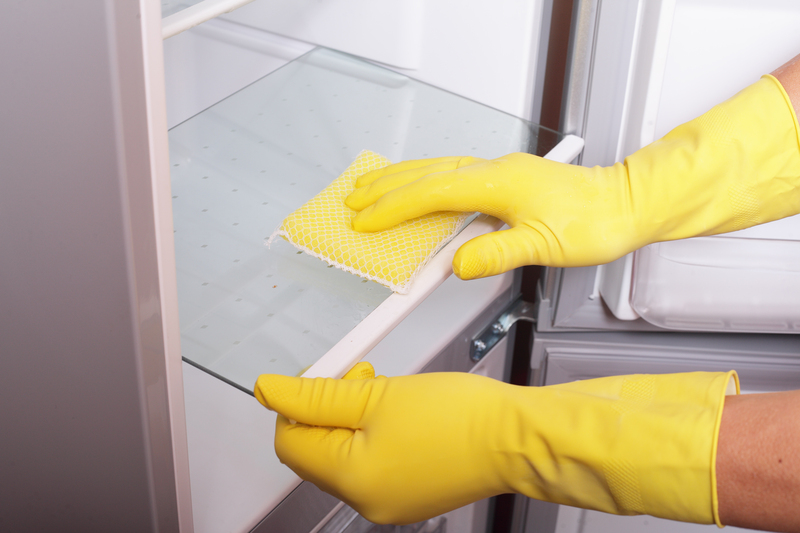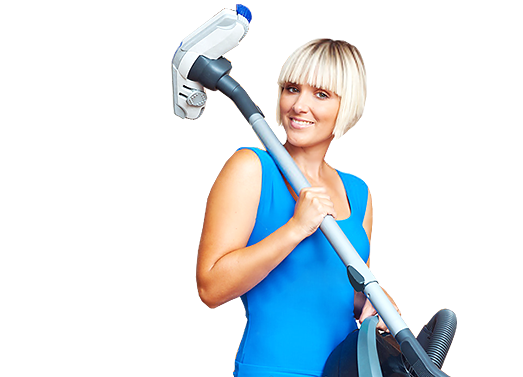Comprehensive Guide to a Mold-Free Bathroom Environment
Posted on 02/09/2025
Comprehensive Guide to a Mold-Free Bathroom Environment
A bathroom is one of the most frequently used rooms in any home, but its high-moisture environment can make it a hotbed for mold growth. Mold in bathrooms is a common concern, not only because it spoils the appearance of your space, but also due to its potential impact on health and the longevity of your property. Creating and maintaining a mold-free bathroom environment requires both knowledge and effort.
In this comprehensive guide, we'll explore effective strategies, tips, and expert advice to help you banish mold for good and ensure that your bathroom remains clean, fresh, and safe for everyone.

Why Mold Thrives in Bathrooms
Bathrooms provide the ideal conditions for mold to flourish. The combination of warm temperatures, excess moisture from showers and baths, and limited air circulation make bathrooms susceptible to the development of black mold and other fungi.
- Humidity: Bathrooms are naturally humid environments due to running water and steam.
- Poor Ventilation: Inadequate airflow allows moisture buildup, fostering mold growth.
- Neglected Areas: Mold especially grows in hidden or hard-to-reach spots, like behind tiles, under sinks, and around fixtures.
Recognizing Mold in Your Bathroom
Catching mold early is crucial to effectively controlling and removing it. Here are some signs of mold in your bathroom you should never ignore:
- Visible Spots: Look for green, black, brown, or white fuzzy patches on tiles, walls, ceilings, or caulking.
- Musty Odor: Mold tends to emit a distinct, earthy smell that lingers even after cleaning.
- Peeling Paint or Wallpaper: Moisture beneath surfaces can cause paint or wallpaper to bubble or peel.
- Allergic Symptoms: Persistent sneezing, coughing, or skin irritation when in the bathroom may indicate mold spores are present.
If you notice any of these symptoms, it's essential to take immediate action to restore a healthy, mold-free bathroom environment.
Common Areas Where Mold Develops in Bathrooms
- Shower and Bathtub: Grout lines, silicone caulking, and shower curtains are prime targets.
- Sink and Faucet: Under the sink, around pipes, and in storage cabinets where leaks may occur.
- Ceiling and Walls: Especially in bathrooms without proper exhaust fans or windows.
- Flooring: Be aware of moisture getting under tiles, mats, or vinyl flooring.
- Windows: Condensation on glass and window sills can encourage mold growth.
Health Risks of Bathroom Mold
While a small patch may seem harmless, continued mold presence can cause potential health problems, especially for sensitive groups like young children, elderly individuals, or those with allergies, asthma, or compromised immune systems. Common health effects of mold include:
- Respiratory problems and coughing
- Eye, nose, and throat irritation
- Sinus congestion and headaches
- Skin rashes
- Worsening of asthma and allergy symptoms
Maintaining a mold-free bathroom environment is vital for both comfort and well-being.
Best Practices for a Mold-Free Bathroom Environment
To prevent mold before it starts, adopt these mold prevention bathroom best practices:
1. Maximize Ventilation
- Install and use an exhaust fan every time you shower or bathe. Ensure that the fan is correctly sized for your bathroom and let it run for at least 15-20 minutes after using hot water.
- Open windows whenever possible to let fresh air circulate and reduce humidity.
- Leave doors ajar after showers to facilitate air movement and dry surfaces faster.
2. Control Moisture and Humidity
- Wipe down wet surfaces after use, including shower walls, glass doors, countertops, and sinks. Squeegees are a great tool for this purpose.
- Fix leaks and drips immediately to prevent water from accumulating in hidden areas.
- Use a dehumidifier in bathrooms without adequate ventilation or where humidity consistently stays above 50%.
- Keep showers and bathtubs dry by hanging up towels and bath mats to dry outside the bathroom.
3. Clean Regularly with Anti-Mold Products
- Use bathroom-specific cleaners with mold-killing ingredients like hydrogen peroxide, vinegar, or commercial anti-mold sprays.
- Scrub grout lines and caulking, as these are especially prone to mold.
- Wash shower curtains and liners regularly, or replace them if persistent mold stains develop.
- Disinfect frequently touched surfaces, including faucets, handles, and drains.
4. Choose Mold-Resistant Materials
- Opt for mold-resistant paint, which contains mildewcides to inhibit mold growth.
- Seal grout and tiles annually to prevent moisture penetration.
- Install moisture-resistant drywall (green board) or cement board in wet areas.
- Use silicone caulk, which is less porous and more mold-resistant than acrylic caulks.
Step-by-Step Guide: Removing Mold from Your Bathroom
If you already have mold, prompt removal is crucial. Here's a simple process for bathroom mold removal:
1. Gather Essential Supplies
- Gloves, goggles, and a mask to avoid contact with mold spores.
- A scrub brush or sponge
- Cleaning solution: Use either a commercial anti-mold product or mix your own using 1 cup of bleach in 1 gallon of water, or equal parts white vinegar and water for a natural alternative.
2. Ventilate and Isolate
- Open windows and doors to create airflow.
- Close off the bathroom from the rest of the house to contain mold spores.
3. Apply the Cleaning Solution
- Spray or wipe the affected area thoroughly.
- Let the solution sit for at least 10-15 minutes to penetrate and kill the mold.
4. Scrub and Rinse
- Use a sturdy brush or sponge to scrub away all visible mold.
- Rinse the area with clean water and dry thoroughly with a towel.
5. Dispose or Replace Severely Affected Materials
- If mold has deeply penetrated grout, caulk, drywall, or ceiling tiles, removal and replacement may be necessary.
Note: For extensive or recurring infestations, or if you are sensitive to mold, hire a professional mold remediation service for thorough treatment.
Tips to Maintain a Mold-Free Bathroom Long-Term
- Check for leaks and resolve them right away, especially after plumbing work or heavy usage.
- Wipe surfaces and dry floors regularly, especially after baths and showers.
- Open cabinets under sinks periodically to allow airflow and prevent condensation.
- Clean vents, exhaust fans, and light fixtures to prevent dust and moisture buildup.
- Re-caulk and re-seal tiles as needed--worn caulking is a leading cause of hidden mold.
- Monitor humidity levels using a hygrometer and keep it below 50% when possible.
Innovative Solutions for a Mold-Free Bathroom
Modern technology and building materials are making it easier than ever to achieve a mold-free bathroom environment:
- Smart bathroom exhaust fans with humidity sensors automatically run when moisture levels are high.
- Mold-resistant grout and caulks are now widely available for renovations.
- Waterproof wall panels offer seamless, easy-to-clean alternatives to tile and grout.
- Integrated anti-microbial surfaces on toilets and sinks reduce bacterial and fungal growth.
- App-based reminders to clean or maintain your bathroom systems can help you stay on top of prevention.
Natural Remedies to Keep Your Bathroom Mold-Free
For those who prefer green cleaning, these eco-friendly methods help keep your bathroom healthy and reduce reliance on harsh chemicals:
- White vinegar: Spray undiluted white vinegar on surfaces and let it sit to kill mold spores.
- Baking soda: Make a paste with water and apply it to affected areas, scrub, then rinse.
- Tea tree oil: Mix a teaspoon with a cup of water in a spray bottle for natural anti-fungal action.
- Lemon juice: The acid helps break down mold and leaves a fresh scent.
Use natural remedies regularly as part of your cleaning routine for a mold-free bathroom environment with minimal environmental impact.

When to Seek Professional Mold Remediation
While many mold issues can be handled by homeowners, certain situations require professional help:
- Large areas of visible mold (greater than 10 square feet)
- Persistent mold growth despite regular cleaning and control measures
- Structural damage, such as warped floors or rotting drywall
- Health symptoms traced to mold exposure
Expert mold remediation specialists use advanced tools to detect, contain, and remove mold, as well as improve ventilation and prevent recurrence for a truly healthy bathroom environment.
Conclusion: Enjoying a Mold-Free Bathroom for Years to Come
Achieving a consistently mold-free bathroom environment requires ongoing attention, but it's a completely attainable goal. By understanding why mold forms, learning to spot early signs, adopting proactive prevention strategies, and responding swiftly to any hint of trouble, you can ensure your bathroom remains both beautiful and healthy.
Remember, whether you rely on innovative bathroom design, natural cleaning products, or regular maintenance, the key to mold prevention is a vigilant, informed approach. Use the tips and solutions outlined in this comprehensive guide to create a safe, clean, and mold-free bathroom space for you and your family.
Take action today, and experience the many benefits of a mold-free bathroom environment for a healthier home lifestyle.




